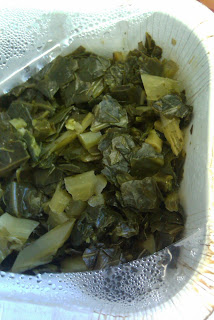1. We are in the process of switching over to foods that are HFCS-free. We’ve done a good job so far eliminating HFCS from our diets, but it’s not 100% gone. I’m not sure that it ever will be. It’s a lot of compromise — especially with items like cold breakfast cereal. We are also switching our most consumed foods over to organic whenever possible. This is mostly milk, yogurt, most produce, and some meats. Organic eating is much easier in the spring & summer during the seasons of abundance.
2. My husband and I generally allow our daughter (she just turned 6 and is in kindergarten) to eat school lunch one time per week and we pick this out together. The school does something fun about once a month. These are often part of the once-a-week school lunches. These cost $2.35 each. Her sack lunches are cheaper, often by quite a bit.
3. We keep additional emergency money in her account at school so that if mom spaces and forgets to pack a drink, she can buy milk. She does not like flavored milk. We also keep the extra money in case something happens that prevents us from packing lunch for the next day — like illness.
4. There are splurgy items in the packed lunches. Not cookies or candy, but turkey bologna is in there and so are drink pouches (100% fruit juice, but still… they are not watered down). Once in a blue moon we will even put fruit chew snacks in her sack lunch. We try to alternate the foods; no sense in having a peanut butter sandwich 4 days a week! I have NEVER packed any type of candy, soda, cakes, or cookies in her school lunch. I have only packed Pringles 2 times; they were sent to her in a care package from grandma. It’s not that we don’t ever have these things; we just limit their intake.
5. My daughter is healthy. She just had her check up and her doctor was pleased. She grew in inches this past year, but did not gain any weight (actually lost a smidge). She plays sports during the fall, winter and spring seasons; summer is reserved for traveling and family time and lots of time at the park near-by. She loves fruits & veggies. We went through the normal phase of parenting where she refused to try certain foods. We stuck to our guns and here we are now — an adventurous eater who will actually give new foods an honest try.
So, here are 5 sample lunches. Lunches 1-3 are more the standard. Luches 4-5 happen if dinner was a smashing success. We have a thermos we use for these. I over-estimated the prices rather than under-estimated. We always send water, too.
#4







